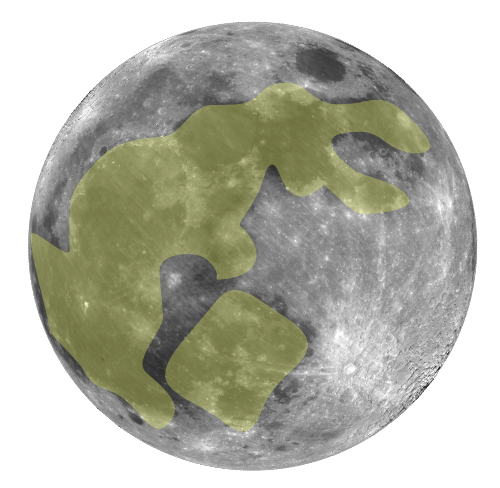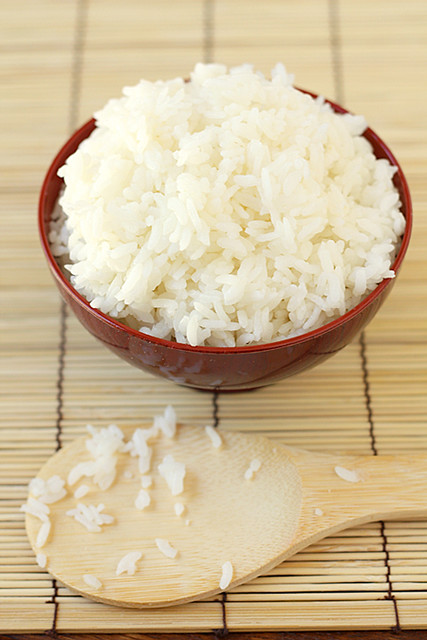Podcast: Play in new window | Download (Duration: 31:51 — 29.2MB)
Last week, we talked about seaweed. This week (and next week), rice! (Hey, that means we’re halfway to sushi!)

Rice is important. Super important. In fact, it’s one of the most important topics we could talk about because of the HUGE influence it’s had on Japanese society and culture. Rice is more than a staple food — it’s the soul of the nation, and the whole of Japanese cuisine has developed around it.
Gohan, the word for “cooked rice” in Japanese, also means “a meal.” The two words are interchangeable. In fact, gohan is used to form the words for the meals of the day:
- asagohan = breakfast
- hirugohan = lunch
- bangohan = dinner
This makes it almost impossible for most Japanese to think of a meal without rice!
Since ancient times in Japan, the person who grew the most rice and managed the land that the rice was cultivated on had political power. Rice was the alternative currency and was the most important source of tax revenue. Carbon dating indicates that rice was first introduced in the 13th century BC and then brought to southwest Japan from China.
Historically, all parts of the rice plant were used. Rice stalks were used to make tatami mats, rice bran was used as a facial scrub, and rice paste was used in bookbinding, as well as for a resist-dye technique for fabrics (especially silk for kimonos).
Rice is part of almost every religious ceremony and seasonal festival in Japan, and also appears in popular folktale culture: while in the U.S. we refer to the man in the moon, in Japan they see a rabbit pounding mochi (rice cakes)!
Can you see it?

As Japan developed, the villages located on sites favorable for rice cultivation were better fed and wealthier. The first nation was formed in the 3rd century AD by a large agricultural clan, who later became Japan’s imperial family. Even to this day, the Japanese emperor has a small rice paddy that he attends to himself inside the imperial palace grounds.
Rice made Japan into an industrious nation because its production cannot be carried out by a single farmer — it requires a community effort. As a result, families pooled their labor and shared water resources and irrigation facilities. People lived in houses clustered together and depended heavily upon each other, since the rice was usually planted on the same day after several days of watering.
This necessitated an emphasis on group interests, the enhancement of skills in group decision-making and the avoidance of friction between families who would be neighbors and co-workers for generation. This commitment to group harmony is still seen today throughout Japanese society.
Because Japan is so mountainous, with very few plains suitable for rice cultivation, rice has always been in short supply. It wasn’t until the 1960s that Japan’s rice production finally exceeded its consumption. This relative scarcity helps explain why the Japanese regarded it as a sacred food for the rich and powerful.

Types of Japanese Rice
Three major groups of Japonica rice are grown in Japan.
- uruchi mai: This is Japanese-style short-grain rice (sometimes also labeled as medium-grain). This covers most of what is grown and eaten in Japan. The grains are removed from their husks and polished. When cooked, they become tender and moist, but retain an al dente texture. They are also slightly sticky, so it is possible to pick up a mouthful with chopsticks.
- genmai: This is Japanese-style brown rice. There are different degrees of polishing, and genmai is the least polished type. Traditionally all rice was eaten unpolished, with only the outer husk removed. Brown rice is higher in fiber and the most nutritious, because it retains more vitamins and minerals. It requires a much longer cooking time and is chewier and nuttier in taste. Genmai is regaining popularity in Japan because of its health benefits.
- mochi gome: Sometimes called “sweet rice” or “glutinous rice”, this rice is whiter, rounder, and plumper than the other Japanese varieties of rice. It is much sticker and used to make mochi, senbei, and mirin.
Most of the Japanese-style rice sold outside of Japan is grown in California on dry fields, but still compare very well to Japanese-grown rice.
